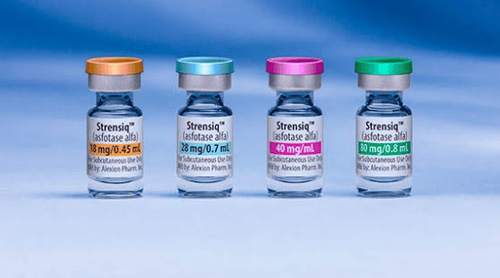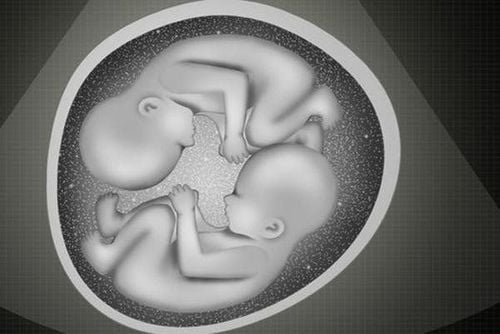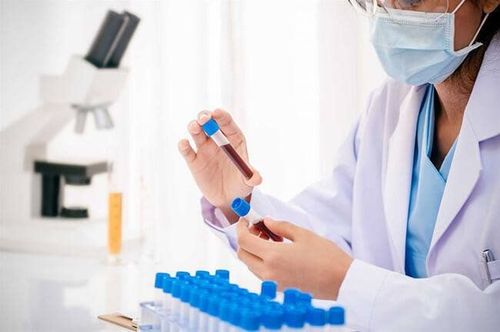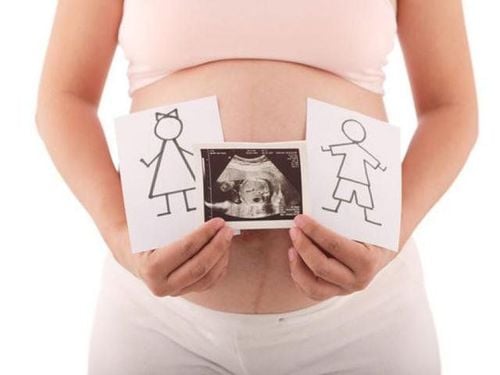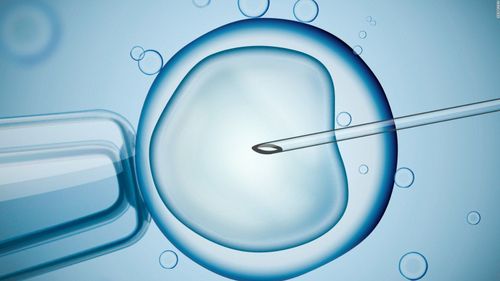This is an automatically translated article.
With the development of modern technology, today parents can completely choose the sex of the fetus. This not only helps to balance the sexes between men and women, but also avoids having genetic disorders in the future.
1. Can we choose the sex of our baby?
Technically, it's possible to choose the sex of your baby. This is thanks to great advances in assisted reproduction, which help doctors identify male and female embryos. Sex selection is an option for couples who want to avoid passing on sex-related genetic disorders to their children. In addition, it is also suitable for many families who want to have children of the opposite sex. This is sometimes called family balance.
However, today's gender options are not equally effective and the cost is also different. Meanwhile, the most accurate sex selection methods are often very expensive, possibly up to tens of thousands of dollars. For this method, you will have to undergo invasive infertility treatment and take fertility drugs, which sometimes bring some potential side effects.
When you want to perform one of the methods of sex selection, you will have to meet strict requirements from your doctor. The first requirement is that you are married and have at least one child other than the gender you are expecting for your next child. Additionally, these methods are age-restricted and require hormone testing to determine if you're still fertile.
Facts have shown that Mother Nature is a bit "biased" towards boys. According to data from the National Center for Health Statistics, about 105 boys are born for every 100 girls. Therefore, current methods of sex selection will play a great role in the gender balance between men and women.
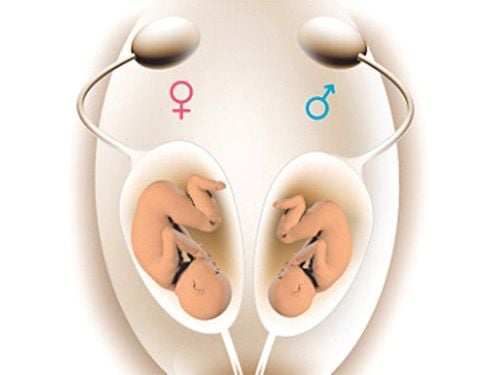
Cha mẹ hoàn toàn có thể lựa chọn được giới tính cho thai nhi
2. Infertility treatment and high-tech sex selection method
Infertility treatment is a way to help you choose the sex of your baby. Currently, artificial insemination (AI) and in vitro fertilization (IVF) are two forms of infertility treatment that can be used in sex selection techniques. These treatments often require an investment of time and money, and you also need fertility drugs.
Artificial insemination (AI) is a type of treatment that brings sperm closer to the site of fertilization. There are different AI methods, of which intrauterine insemination (IUI) is the most popular. During IUI, your doctor will use a thin catheter to insert sperm directly into a woman's uterus.
With IVF, fertilization takes place outside the body and usually begins with a course of fertility drugs to stimulate the ovaries to produce many eggs instead of releasing one at a time. month as usual. This gives the insemination a better chance of success.
When your eggs are ready, the doctor will anesthetize and insert the ultrasound transducer through the vagina to examine the ovaries and follicles. A thin needle is then inserted through the vaginal wall to remove the egg from the follicle.
Your egg will be fertilized with sperm in a petri dish. After 3-5 days, the fertilized egg (now an embryo) will be inserted into the uterus through a thin tube. The number of embryos to be inserted depends on your age, as well as the quality of your embryos and your reproductive history. As a general rule, if you're under 35 and the embryos look healthy, no more than two embryos should be transferred into the uterus.
3. Preimplantation Genetic Testing (PGT)
Preimplantation genetic testing (PGT) is a procedure that can be done in IVF to test one or two cells from an embryo for genetic or chromosomal disorders. There are two main types of PGT testing, including preimplantation genetic diagnosis (PGD) and preimplantation genetic screening (PGS). Both of these tests can be used to screen embryos for sex.
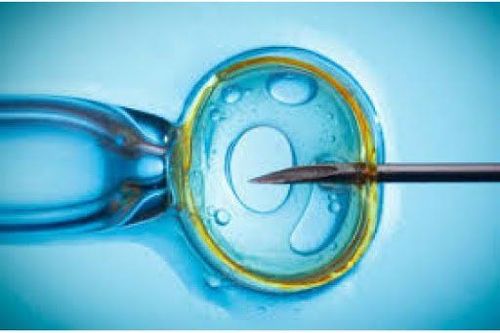
Xét nghiệm di truyền tiền làm tổ có thể được thực hiện trong thụ tinh ống nghiệm
In the PGD test, parents with a serious genetic disorder can have an embryo test, which reduces the risk of having a baby with the same condition. Sometimes, sex determination of the embryo is important because some genetic disorders are sex-related and affect mainly males. For example, in a couple at risk of having a son with Duchenne muscular dystrophy, the PGD test can identify male embryos with abnormal genes and not implant them in the uterus.
For PGS testing, embryos from parents thought to have a normal chromosome number are tested for chromosomal disorders, such as Down syndrome. In addition, PGS can also screen embryos for sex, helping to balance the family.
Overall, both PGD and PGS are almost 100% accurate in determining the sex of an embryo. By transferring only healthy embryos into the uterus, the risk of miscarriage or having a baby with genetic disorders is lower. Some prenatal tests, including amniocentesis, or chorionic villus sampling (CVS) are still done if you're 35 or older to check for genetic abnormalities.
After a cycle of PGD or PGS, the remaining embryos of both sexes can be frozen. They will be used in the future if you have had a miscarriage or decide you want more children. Frozen embryos generally have the same success rates as fresh embryo transfers, but the procedure is less invasive and cheaper.
5. Ericsson method
This method is named after its pioneer Ronald Ericsson. Theoretically, sperm would be placed directly into a woman's uterus via AI and become the desired sex. This technique is usually 78-85% effective for male gender and 73-75% for female.
In the Ericsson method, a sperm sample is poured over a gel-like liquid in a test tube. All sperm swim downwards naturally, but male sperm tend to swim faster and reach the bottom sooner. Then, the fast-swimming and slow-swimming sperms will be separated, you can fertilize with sperm that helps you conceive of the desired sex.

Phương pháp Ericsson mang lại hiệu quả chọn giới tính lên tới 85%
6. The Shettles . Method
This is a timed method on specific days of your cycle. Overall, the Shettles method can be as effective as 75% for female and 80% for male.
Theoretically, sperm carrying a Y chromosome (for boys) usually moves faster but does not live as long as sperm carrying an X chromosome (for girls). So if you want to have a boy, the Shettles method recommends having sex as close to ovulation as possible. If you want to have a girl, you should plan to have sex 2-4 days before ovulation.
7. Whelan . Method
The Whelan method is in direct conflict with the Shettles method. These are biochemical changes that can facilitate spermatogenesis to occur earlier in a woman's cycle.
So, if you want to have a boy, you should have intercourse 4 to 6 days before your basal body temperature rises. If you want a girl, plan to have sex two to three days before ovulation.
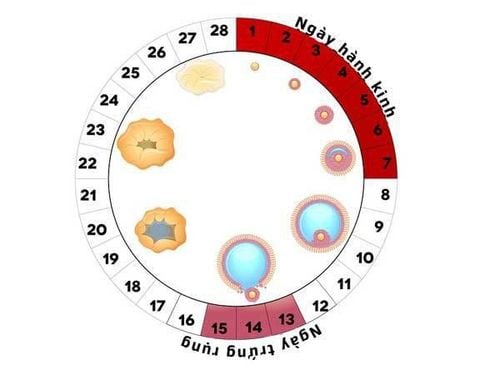
Bạn có thể chọn giới tính theo phương pháp Whelan bằng việc căn ngày quan hệ dựa vào lịch rụng trứng
8. Gender Selection Kit
Home sex selection kits are often based on Shettles' theory. Separate kits for girls and boys include thermometers, ovulation predictors, vitamins, herbal extracts and douches, intended to aid in choosing a specific sex.
This kit has a success rate of up to 96%. You'll track your cycle using a thermometer and test your urine with ovulation predictors. According to the Shettles method, you should have intercourse two to four days before ovulation if you want a girl and as close to ovulation as possible if you want a boy.
In addition, douching aims to change the vaginal environment to affect the chances of successful fertilization of sperm carrying X or sperm Y. Besides, Vitamins and herbal extracts are also believed to be has the effect of increasing the birth rate according to the sex you choose.
To prepare for a healthy pregnancy, both husband and wife should check their reproductive health 3-5 months before becoming pregnant.
The wife should:
Get vaccinated before pregnancy (especially against rubella because rubella in pregnancy is extremely dangerous ) Genetic testing to screen for genetic diseases before pregnancy Check for secondary infections In particular, women over 35 years of age, if they want to become pregnant (especially if they have never been pregnant), will have to have a very detailed health check because pregnancy at this age often problems: Ovarian failure, premature birth, higher risk of birth defects, placenta previa, preeclampsia.

Cả hai vợ chồng đều nên đi khám sức khỏe sinh sản trước khi mang thai
Husbands should:
Check reproductive health, detect testicular atrophy, physiological weakness, weak sperm... Sexually transmitted diseases, especially those that cannot be cured, are extremely dangerous. Vinmec Insurance currently has many comprehensive health care programs for couples, pregnant mothers and their unborn babies, including basic pre-marital examination packages, advanced pre-marital examination packages, and full maternity programs. package . Vinmec has a team of experienced doctors in the fields of obstetrics and gynecology, IVF, stem cells, gene technology, capable of synchronously and comprehensively deploying the most advanced assisted reproductive techniques today.
For specific information about fertility and maternity packages at Vinmec, please contact the hospitals and clinics of Vinmec health system nationwide.
Please dial HOTLINE for more information or register for an appointment HERE. Download MyVinmec app to make appointments faster and to manage your bookings easily.
Reference source: babycenter.com
LEARN MORE
Natural contraception by calculating the day of ovulation Great tips to calculate the day of ovulation to help couples easily conceive How to calculate the day of ovulation for women with irregular menstrual cycles




